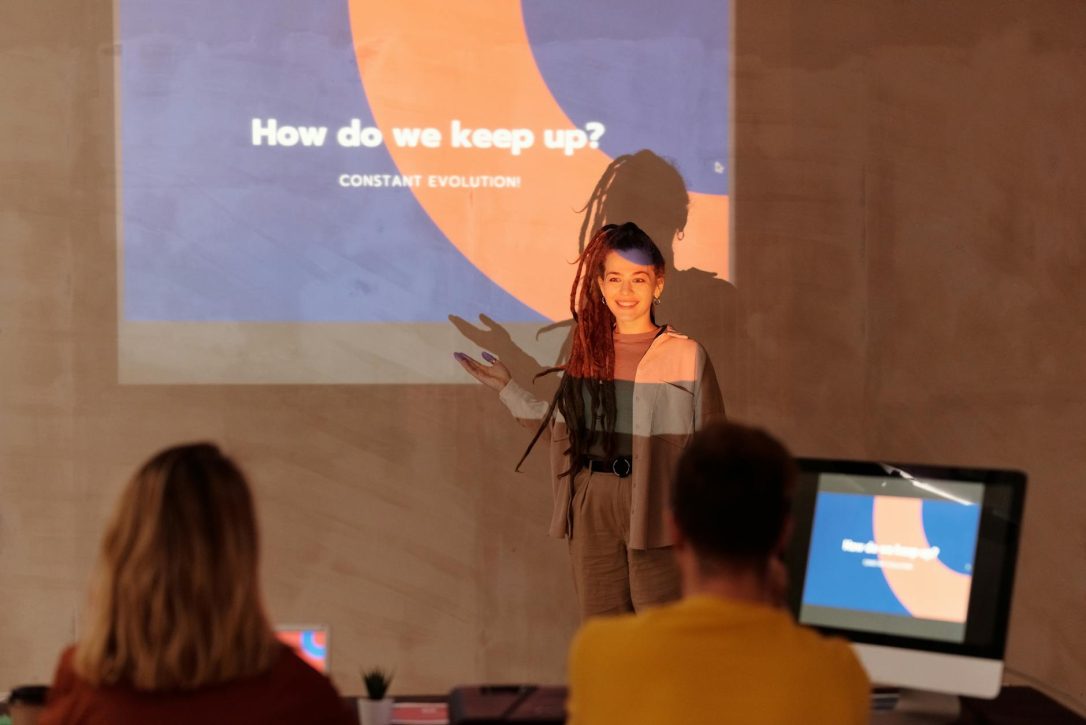Understanding Graph Neural Networks
Graph Neural Networks (GNNs) have become an essential area of study within the field of deep learning, particularly when it comes to handling non-Euclidean structured data. This section will guide you through the evolution of GNNs and highlight the key concepts that define them.
Evolution of GNNs
Researchers have been developing neural networks that operate on graph data, purely known as GNNs, for over a decade. The capabilities of these networks have substantially advanced recently, broadening their practical applications. They find uses in various fields, including antibacterial discovery, physics simulations, fake news detection, traffic prediction, and recommendation systems (Distill).
The concept of representing graph-structured data using deep neural networks allows for effective learning and understanding of complex relationships and structures in data. Over time, the foundational principles behind GNNs, including their ability to process information while considering the graph’s topology, have contributed to their growth and adaptability.
Key Concepts of GNNs
GNNs serve as a versatile framework for defining deep neural networks that operate directly on graph-structured data. They achieve this by generating node representations that consider both the structure of the graph and the available feature information (Medium).
Here are some key characteristics that define GNNs:
-
Permutation Equivariance: GNNs operate on sets of node embeddings and are invariant to the ordering of nodes. This means they maintain consistent predictive behavior regardless of how nodes are arranged within the graph.
-
Message Passing: During the processing of the graph, GNNs utilize flexible neural networks for transformation functions, allowing them to exchange information effectively between nodes.
-
Spectral Graph Convolutions: These convolutions are computed based on the graph Fourier transform, essential in GNNs. They enable the processing of irregular graph-structured data, making operations like graph filtering viable on complex networks.
-
Convolutional Nature: The convolution operation in Graph Convolutional Networks (GCNs) parallels that of traditional convolutional neural networks. GCNs are designed to extract features from neighboring nodes while maintaining weight sharing, making them robust against variations in node and edge orders (DataCamp).
By understanding these key concepts and the evolution of GNNs, you can appreciate their growing significance in various applications and discover how they leverage the intrinsic properties of graph data. For hands-on learning, you may explore more on graph neural network implementation and check out graph theory code examples for practical insights.
Graph Convolution Process
In understanding how Graph Convolutional Neural Networks (GCNs) work, it’s essential to explore the graph convolution process, which includes normalizing aggregation results and the impact of graph layering.
Normalizing Aggregation Results
GCNs utilize a technique known as message passing, where each node sends its vector to neighboring nodes to update their vectors. The aggregation of these vectors relies on a normalized adjacency matrix. This method enhances optimization and stability during training. The normalization is crucial as it balances the feature vectors based on the degree of nodes, ensuring that nodes with different numbers of neighbors have comparable values (Towards Data Science).
This normalization allows the model to avoid issues where nodes with many connections overpower those with fewer, creating a more even distribution of information across the graph. Here’s a simple representation of how the normalization works:
| Node | Number of Neighbors | Raw Vector Sum | Normalized Vector |
|---|---|---|---|
| A | 3 | [4, 2] | [1.33, 0.67] |
| B | 1 | [2, 1] | [2, 1] |
| C | 2 | [3, 2] | [1.5, 1] |
Such normalization is vital for maintaining consistency across nodes in the graph, particularly when working with large datasets where node connectivity varies significantly.
Impact of Graph Layering
The layering of graph convolutions impacts how information flows through the network. Each layer of a GCN takes input from the previous layer and transforms feature vectors iteratively. This process continues with each layer increasing the model’s ability to learn complex relationships within the graph while preserving the graph’s connectivity structure (Distill).
Adding self-loops to this structure allows nodes to aggregate information from their neighbors and themselves, facilitating a more comprehensive understanding with minimal expressiveness loss. The implementation of these layers leads to improved representation learning, allowing the model to fine-tune its understanding of the graph’s features over time.
| Layer | Transformation Type | Purpose |
|---|---|---|
| 1 | Initial Aggregation | Capture local relationships |
| 2 | Feature Update | Gradually incorporate broader context |
| 3 | Output Layer | Final feature representations for tasks |
As you develop your understanding of GCNs, it’s helpful to explore practical examples and code implementations of graph neural networks algorithms that utilize these principles. These insights will deepen your knowledge of the advancements in graph theory and their real-life applications. If you’re interested in further exploration, check out our section on applications of graph theory in real life.
Implementing Graph Neural Networks
Implementing graph neural networks (GNNs) can be an exciting journey if you’re ready to dive into the world of advanced algorithms. In this section, you will learn about utilizing PyTorch Geometric, an essential tool for implementing graph convolutional neural networks, and address the over-smoothing challenge that comes with stacking multiple layers.
Utilizing PyTorch Geometric
PyTorch Geometric is a library that simplifies the process of implementing graph convolutional layers through functions like GCNConv. This function allows you to easily set up your graph convolutional network, which is crucial for aggregating data from neighboring nodes. When using GCNConv, remember that the idea is to assign larger weights to features from nodes with fewer neighbors, as suggested by Kipf et al. in 2016. This approach balances the influence of highly connected nodes, making sure that isolated nodes get a fair chance in the learning process.
Here’s a simple code example to get you started with PyTorch Geometric:
import torch
from torch_geometric.nn import GCNConv
class MyGNN(torch.nn.Module):
def __init__(self, in_channels, hidden_channels, out_channels):
super(MyGNN, self).__init__()
self.conv1 = GCNConv(in_channels, hidden_channels)
self.conv2 = GCNConv(hidden_channels, out_channels)
def forward(self, x, edge_index):
x = self.conv1(x, edge_index)
x = torch.relu(x)
x = self.conv2(x, edge_index)
return x
This example initializes a simple two-layer GNN. The edge_index parameter is crucial, as it defines the connections between nodes in your graph. By customizing this structure, you can visualize how message passing works between nodes.
Over-Smoothing Challenge
While increasing the number of layers in your GNN can help aggregate values from distant nodes, it can also lead to a challenge known as over-smoothing. Over-smoothing occurs when all node embeddings start to look similar despite their different features. This can make it difficult for the network to distinguish between nodes after multiple layers. The general rule of thumb is to limit the number of layers to maintain useful distinctions in node representations.
To mitigate over-smoothing, consider keeping the graph depth minimal and employing techniques like skip connections or designing hybrid models that combine different layer types. Message passing can also be sensitive; it is essential to optimize the number of hops in your model, as each hop gathers more context but could lead to increased risks of overfitting (Aritra Sen).
Quick Reference Table
Here’s a quick reference for some common terms and their meanings related to implementing GNNs:
| Term | Meaning |
|---|---|
| GCNConv | Function for implementing graph convolution in PyTorch Geometric |
| Over-Smoothing | Loss of distinctiveness in node embeddings after multiple layers |
| Message Passing | Technique for aggregating node information in GNNs |
| Edge Index | Defines the connectivity of nodes in a graph |
Understanding these concepts allows you to tailor the implementation of graph convolutional neural networks for various practical applications. To explore more, check out our discussions on graph theory practical applications and delve deeper into graph theory code examples for more insight.
Practical Applications of GNNs
As you explore the diverse uses of Graph Neural Networks (GNNs), you’ll discover how these innovative models are making waves in various fields, especially in computational biology and performance optimization with GATConv.
GNNs in Computational Biology
Graph Neural Networks have proven to be particularly valuable in the realm of computational biology. Their ability to manage complex relationships and data structures makes them suitable for tasks such as protein interaction prediction, drug discovery, and genomics analysis. GNNs can analyze molecular structures represented as graphs, helping in understanding biological processes and interactions.
For example, the Graph Convolutional Networks (GCNs) can be leveraged to classify nodes in biological networks, offering insights into cellular functions and interactions. In practical applications, GNNs have outperformed traditional methods, improving prediction accuracy in various biological contexts. Their strength lies in their capability to learn from neighboring nodes, making them adept at detecting patterns that might remain hidden with other models.
| Application Area | GNN Use Case |
|---|---|
| Protein Interaction | Predicting interactions between proteins |
| Drug Discovery | Identifying potential drug candidates |
| Genomics | Analyzing genetic data and relationships |
GATConv for Enhanced Performance
Graph Attention Networks (GATConv) represent a significant advancement in the field of GNNs, addressing some limitations of traditional Graph Convolutional Networks (GCNs). By incorporating masked self-attentional layers, GATConv enables the model to focus on the most relevant nodes during the aggregation process. This feature allows GATConv to achieve state-of-the-art results in various graph-related tasks.
The flexibility of GATConv models allows for optimizations such as dropouts and the use of multiple hidden channels, enhancing performance metrics even further. Whether you are working on node classification tasks or edge prediction, GATConv offers powerful capabilities that can be harnessed to tackle complex problems effectively.
| Feature | Benefit |
|---|---|
| Self-Attention | Focuses on important nodes, improving accuracy |
| Optimization Options | Enhances performance through various techniques |
| Versatile Applications | Suitable for multiple graph tasks, from classification to prediction |
With GNNs continually evolving and proving useful in fields like bioinformatics, social analysis, and computer vision (Springer), you can confidently explore their applications further. The advancements in technology, particularly with GATConv, provide exciting new avenues to solve complex problems with graph-based data structures. For a deeper dive, consider checking out our resources on graph theory practical applications and graph neural networks algorithms.





